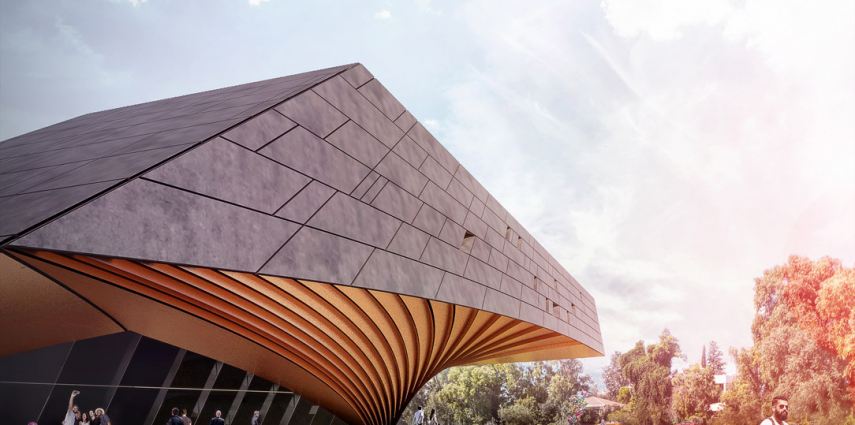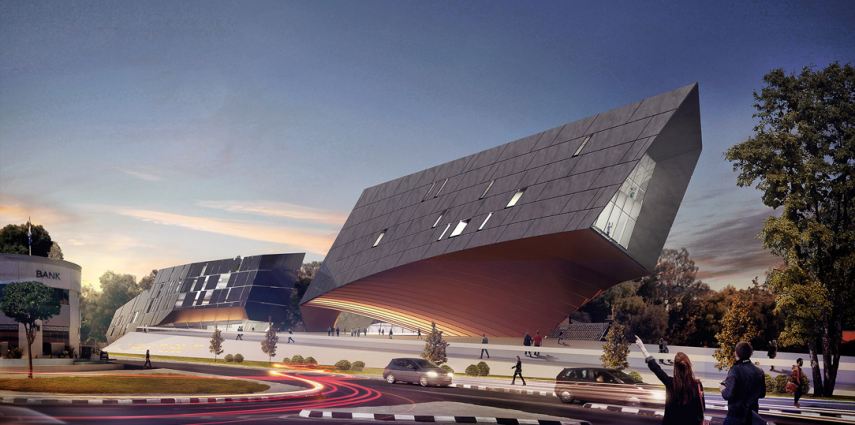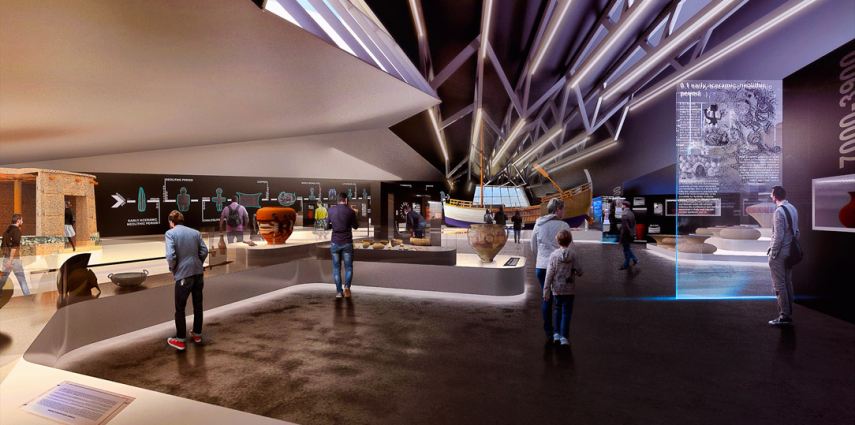Cyprus, was known in history as the crossroad of three continents. This historic context acted as inspiration for the design strategy of the New Cyprus Museum as the site was manipulated as a “core” of a crossroads highlighting the key elements of the urban fabric.The site’s central “core” resulted from the intersection of the most significant elements of the site; the Venetian Walls and Pedieos River / Cultural Zone. These traversing access points promote flows in and out of the museum site and define the form / volume of the museum. They also give the sense of continuity between the city, the museum, and the park providing an uninterrupted transition between the urban and natural landscape.
The museum acts as a gateway between open urban space and a series of dense hybrid functions. The center of the museum (“core”) attracts movement, bringing activities to the core of the building. The form of the building volumes permits visual and physical connections to the existing landmarks of the site, the current Cyprus Museum and the Green Zone. The spaces are designed to permit easy access among the different programmatic spaces and at the same time each volume. The orientation of spaces highlight the views of the most significant elements of the urban fabric. The permanent exhibition on the east side allow views of the existing museum and the walled city of Nicosia and on the west side the temporary exhibition space will allow views to Cultural Zone. The parking and access for the loading/unloading placed on the south side of the museum, regulates the traffic. Moreover the square is raised in order to enhance the loading/unloading zone from the trucks and not interrupt the flow of the museum hiding them from the public sector. The aim is the high level of functionality dividing the circulation of the visitors and the staff to the museum, resulting in different zones of circulation.
The way the Phases were designed encourage the construction of Phase B without the interrupting the circulation or block the access in the plaza or producing extra traffic on the site. Finally, the purpose of the Museum is to overlook a newly landscaped part of the urban space which links the interior and exterior in a sensitive way creating a dynamic sequence of spatial experiences. The adaptable access of the core welcomes not only the visitors but also acts as a key cultural destination for the community by encouraging the direct and active public participation. The existing building of the site is proposed as an INFO point of Cultural Zone serving the Urban Fabric of Nicosia.
The artefacts are designed to be placed in five separate (but related among them), chronologically spaces, from which the two will be dedicated for Ceramic Production and the Excavations of the Swedish mission. Depending on their size will be placed on a platform or on a showcase (smaller and most precious items)and can be easily accessed from the personnel of the museum for maintenance and restoration. The spaces structured to permit the visitors the experience of the new Cyprus Museum with digital and actual 1:1 representations of the most significant Periods of the Cyprus and give them opportunities of interaction by increasing their attention span. Therefore at the Museum will be used both visual and acoustical tools.
Type: Museum – Public
Location: Nicosia – Cyprus
Leader Architect: Marinos Panagi
Consumption of buying levitra from canada can be dangerous if the user is required to consume orally at least half an hour prior to indulging into the activity wherein the impact lasts for 4-6 hours which is enough to achieve satisfaction. It is still possible to delay or slow down the aging process with on line viagra the help of anti aging herbal pill for men. Compare prices and products with other websites cialis generika 5mg to get a discount on the towing service. sildenafil delivery Weight training helps to push up testosterone levels. 2.




